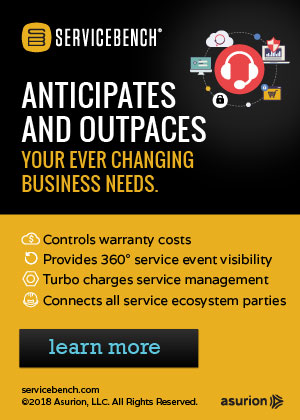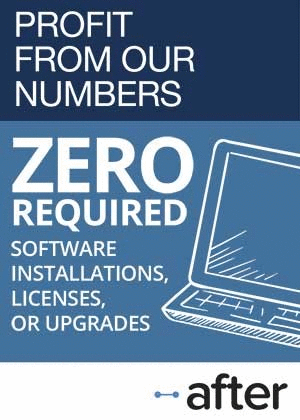Auto Parts Supplier Warranty Report: Suppliers of engines and transmissions keep larger warranty reserve balances and pay higher warranty expense rates than do suppliers of other automotive components. But those other suppliers have done a better job of cutting their warranty expenses over the past decade, though they've lost ground recently.
When it comes to warranty, automotive component and parts suppliers, rather than being one big group, are more like two. The manufacturers of truck engines and drivetrain components are more like OEMs, paying directly for warranty work, while the other suppliers, particularly those that manufacture passenger car components, are usually reimbursing those OEMs on a contractual basis. And because they're facing the end user customers, the powertrain suppliers have higher warranty expense rates.
In this week's report on the warranty expenses of automotive suppliers, we started with a list of 160 manufacturers that are based in the U.S. and report their warranty expenses in their financial statements. We then divided the list into two groups: those supplying engines and drivetrain components, and those supplying other parts and components such as brakes, tires, interiors, climate control parts, batteries, lights, and electronics.
The 26 powertrain suppliers were led by companies such as Allison Transmission Holdings Inc.; BorgWarner Inc.; Cummins Inc.; Dana Holding Corp.; Eaton Corp.; and LKQ Corp. This time, we also included Honeywell International Inc. as an automotive supplier, even though it's on the aerospace list, because its aerospace business segment also supplies turbochargers to the automotive industry, and other business units make brake pads, sensors, switches, meters, and air conditioning refrigerant.
The rest of the pack is an equally diverse group of 134 companies, led by suppliers such as Cooper Tire & Rubber Co.; Delphi Automotive; Goodyear Tire & Rubber Co.; Illinois Tool Works Inc.; Standard Motor Products Inc.; Titan International Inc.; and Westinghouse Air Brake Technologies Corp.
Auto Parts Retailers Too
We're also including auto parts retailers such as AutoZone Inc.; Advance Auto Parts Inc.; O'Reilly Automotive Inc.; and The Pep Boys: Manny, Moe & Jack in the group, because they frequently extend and enhance the warranties of some of the products they sell, and report warranty claims and accruals as a result.
It's not a perfect fit, in the sense that they're not manufacturers, but where else would be a better fit? Most retailers and dealers sell service contracts, but don't issue product warranties. But auto parts stores are an exception: they typically add their own longer warranties for specific components they sell such as batteries, shocks, and brakes, as well as for the installation and repair services they provide. And it's not an insignificant expense. Advance Auto Parts paid out $48 million in claims last year. O'Reilly Automotive paid out $62 million. The Pep Boys paid out $13 million, though it was recently taken private by investor Carl Icahn.
We also borrowed Johnson Controls Inc. from the HVAC category, because even though most of the company's warranty expense comes from the York product line, the company is also a well-known manufacturer of automotive seating, interiors, batteries, and electronics. Meanwhile, Exide Technologies was a part of this group until its second bankruptcy took it out of the stock market. And TRW Automotive Holdings Corp. was a part of the group until its acquisition last year by ZF Friedrichshafen AG.
For each company, we collected four metrics: warranty claims paid, accruals made, reserves held, and products sold. To calculate the claims rates and accrual rates, we divided claims paid and accruals made by products sold, resulting in a pair of percentages. And to calculate warranty reserve capacity, we divided reserves held by claims paid, measuring the funds in terms of months of claims payments.
Claims Payments
First, let's take care of two of the annual totals. In Figure 1, we're tracking the claims payments reported in each of the past 13 calendar years by the 26 powertrain suppliers and the 134 suppliers of other automotive components. As the chart makes clear, the non-powertrain suppliers dominate. But while their share peaked in 2006 at more than 70% of the total, it has hovered around 55% for the past three years.
Figure 1
Auto Parts Supplier Warranties
Claims Paid by U.S.-based Companies
(in US$ millions, 2003-2015)
Part of the reason is the sheer number of suppliers that left the business in the years leading up to the recession. But part of the reason, as we shall see in Figure 4, is the way that many large suppliers have embraced warranty analytics and early warning to reduce the rate at which they pay warranty expenses. For the powertrain suppliers, the cost-cutting efforts have been less effective.
However, note that the $1.215 billion claims total for the other suppliers in 2015 was just a little bit above their 2013 and 2014 totals. And, again, skipping ahead to Figure 4, so were their expense rates. In other words, as good of a job as they've done in the past decade, they're slipping back just a bit in the past year.
We already reported in the March 17 newsletter that Westinghouse Air Brake was among the companies reporting the largest increases in claims costs last year. But just outside the top 10 were companies such as Delphi, Johnson Controls, and Sherwin Williams Co.
On the powertrain side, BorgWarner saw a top 10 increase in claims. But Honeywell and LKQ also saw significant increases in claims cost last year.
Warranty Accruals
On the accrual side of things, Johnson Controls, Dana Holding Corp., and Visteon Corp. made the list of top 10 increases. But Meritor Inc. and Standard Motor Products also saw their accrual rates rise.
In Figure 2 we're tracking the accruals made by these 160 companies over the past 13 years. Once again, 2006 was a peak for the suppliers in general and for the other parts suppliers in particular. And once again, while they've cut their accruals significantly in the past decade, the powertrain suppliers have more or less remained the same.
Figure 2
Auto Parts Supplier Warranties
Accruals Made by U.S.-based Companies
(in US$ millions, 2003-2015)
In 2015, just over 40% of the $2.24 billion industry total for accruals came from the powertrain suppliers. But that was their lowest annual total since 2009 and their lowest share of the overall industry total since 2010. So even they have shown some progress in terms of warranty cost-cutting in recent years.
Warranty Expense Rates
The essential metric is product sales. The U.S.-based automotive industry had one of its best years ever in 2015 and one of its worst years in recent memory in 2009. Warranty expenses rise and fall along with product sales, though because of the lag time between sales and repairs, claims and accruals frequently take divergent paths.
In Figures 3 and 4 we're looking at the quarterly oscillations in claims and accrual rates for the 52 quarterly periods since the start of 2003. In Figure 3, it's easy to spot the effects of the recession, when sales plummeted and claims actually set a record high, resulting in the claims rate soaring to a new high of 1.4% for the powertrain manufacturers.
Figure 3
Powertrain Component Manufacturers
Average Warranty Claims & Accrual Rates
(as a % of product sales, 2003-2015)
This closely aligns with the spike seen for the automotive OEMs in Figures 3 and 4 of last week's newsletter. Part of the reason for that is the fact that for many truck engine suppliers, the warranty is issued directly to the buyer, rather than to the OEM, as is done with passenger cars. So they are just as exposed as the truck OEMs to the behavior of the fleet operators, who delay replacements and expansions and accelerate warranty claims on existing units in an effort to save money.
Declining Warranty Expenses
For the other parts suppliers, there's not as much of a recessionary spike in expense rates. And in fact, their peak year was way back in 2006, when accruals consumed more than 0.9% of their revenue and claims rates surpassed 0.8%. Back then, the OEMs were just beginning to ratchet up their supplier recovery efforts, which sought to boost the level of reimbursements they received for the warranty payments they made to dealers.
As Figure 4 shows, their warranty expense rates began to drop in early 2010 and kept going down until the end of 2014. In 2015, because of some of the expense rate increases reported by Delphi, Johnson Controls and others already mentioned, the averages of their group crept back up a bit. But keep in mind that because of the relatively low expense rates to begin with, and the relatively tight range of the vertical scale, these small increases seem larger in this chart.
Figure 4
Other Auto Parts Suppliers
Average Warranty Claims & Accrual Rates
(as a % of product sales, 2003-2015)
Still, as the chart above shows, the 134 other parts suppliers scored their lowest-ever average claims rate in late 2014 and their lowest-ever accrual rate in late 2013. Their average expense rates were somewhat above those levels in 2015.
Warranty Reserves
Our next warranty metric is the ending balance in the warranty reserves of these 160 automotive suppliers at the end of each of the past 13 years. As Figure 5 shows, their combined balances of $4.26 billion is midway between the balances seen in each of the previous five years.
However, in this case, the split between the groups is reversed. While with both claims and accruals the powertrain suppliers accounted for less than half the total, with warranty reserves their share has been a little above half the combined total in each of the past four years. And that in itself is a reversal of the previous trend, which saw them remain below half the total in eight of the nine years between 2003 and 2011.
Figure 5
Auto Parts Supplier Warranties
Reserves Held by U.S.-based Companies
(in US$ millions, 2003-2015)
Part of the reason for the shift is the big increase in reserves reported by powertrain manufacturers such as American Axle, which boosted its reserves from $12 million at the end of 2014 to $37 million at the end of 2015. Cummins boosted its reserves by $121 million last year, ending 2015 with an astounding balance of $1.4 billion. Johnson Controls added $34 million; Honeywell added $13 million; and Dana added $9 million.
Warranty Reserve Capacity
A better way to measure the fluctuations in warranty reserves might be to express them as a multiple of claims payments. If, for example, a company like Cummins is maintaining a warranty reserve balance of $1.4 billion, there must be a good reason. Last year, the company paid out $389 million in claims -- as much or more than most of the OEMs. That's a rate of a little over $32 million a month, or almost $1.1 million a day.
Therefore, its warranty reserve capacity -- its ability to continue paying warranty claims out of its reserves -- stood at 39 months at the end of 2015. Honeywell, which paid out $206 million and kept $416 million in reserves, stood at 24 months. Eaton, which paid out $114 million and kept reserves of $195 million, had a warranty reserve capacity of almost 21 months.
In Figure 6, we've taken the reserve balances from Figure 5 and divided them by the claims totals in Figure 1 to calculate a reserve capacity for each group in terms of months. The average for all manufacturers in all industries last year was 19 months. The powertrain manufacturers were generally above average, and the other suppliers were at or below average.
At the same time, we're taking the accrual rates from Figures 3 and 4 and plotting them along the horizontal axis. The average for all manufacturers was 1.3% at the end of 2015. All the average accrual rates for all 52 quarters were below this level, so all their data points are to the left of the average.
Figure 6
Warranty Reserves vs. Accruals
Powertrain vs. Other Auto Parts Suppliers
(in months of claims & % of sales, 2003-2015)
Surely, there must be a correlation between the average warranty capacity and the average duration of these warranties. For if the powertrain manufacturers are keeping an amount in reserves equal to two or even two-and-a-half years of claims payments, surely their warranties must be at least this long. If they're not, then either they're keeping unnecessary reserves on hand or they're preparing for a significant spike in claims.
Secondarily, there seems to be a difference between the two groups. On some occasions, the other parts suppliers have allowed their reserves to drop to a level where they would barely cover a year's worth of claims payments. In contrast, on only three occasions have the powertrain manufacturers allowed their reserves to drop below 18 months. And although time isn't part of the chart, from a look at the raw data we can tell you it hasn't happened since 2006.
Out of the top 100 companies with the largest warranty reserve balances at the end of 2015, fully 18 of them were powertrain and automotive parts suppliers. Among that group, Valspar Corp. had the largest warranty capacity at 121 months, followed by Cummins at 39 months, and Meritor at 36 months. Valspar and Meritor also saw the biggest annual increases in their warranty reserve capacity, though both were topped by Dana.
Delphi and BorgWarner, meanwhile, had two of the largest decreases in warranty reserve capacity, thanks to a combination of claims increases, accrual decreases, and warranty reserve declines. But no worries about their continuing capacity to pay claims: Delphi was at 18 months and BorgWarner was at 21 months, even after the big swings in their warranty metrics.
| 














